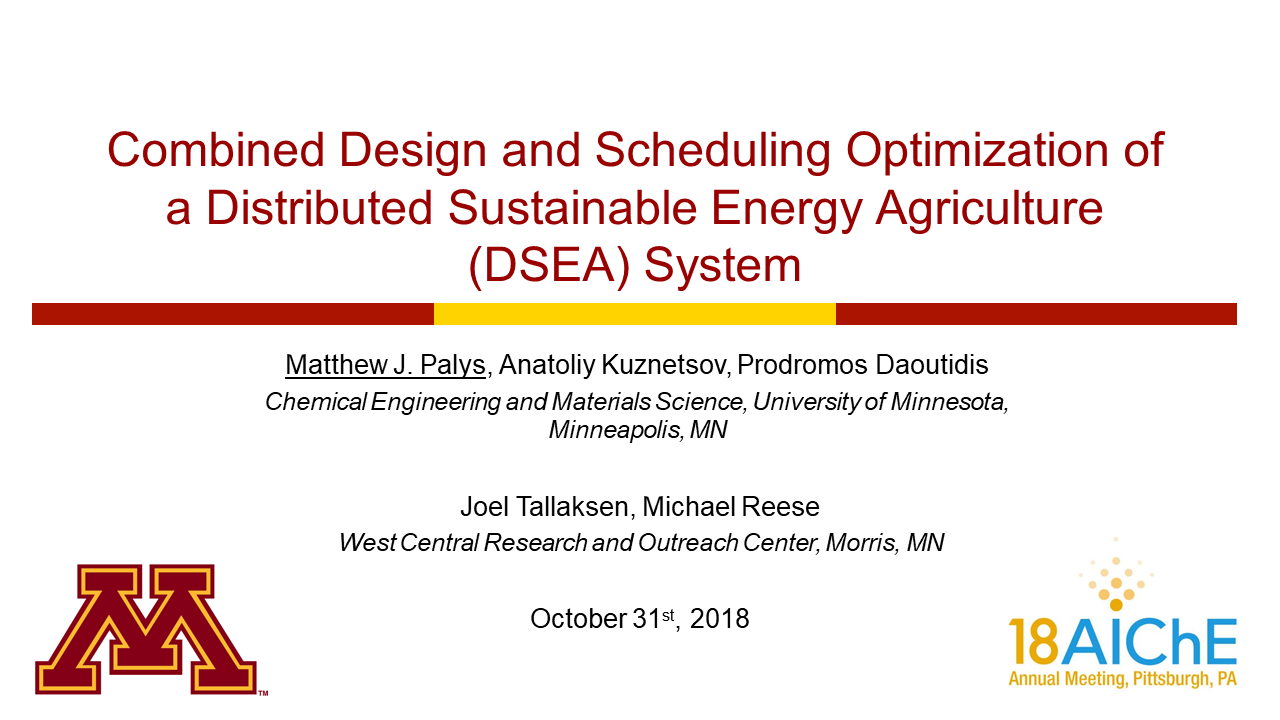Presentation
Design Optimization of an Ammonia-Based Distributed Sustainable Agricultural Energy System
Small-scale, distributed production of ammonia better enables the use of renewable energy for its synthesis than the current paradigm of large-scale, centralized production. Pursuant to this idea, a small-scale Haber-Bosch process has been installed at the West Central Research and Outreach Center (WCROC) in Morris, MN [1] and there is ongoing work on an absorbent-enhanced process at the University of Minnesota [2], [3]. Using renewables to make ammonia would greatly improve the sustainability of fertilizer production, which currently accounts for 1% of total global energy consumption [4]. The promise of renewable-powered, distributed ammonia production for sustainability is in fact not…


